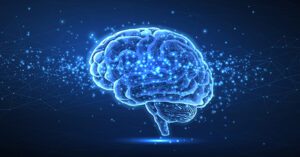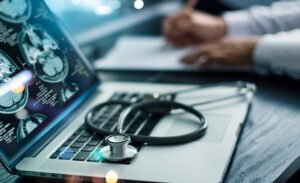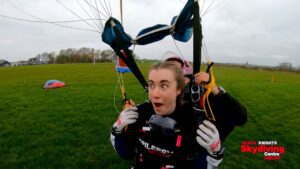 Epilepsy is a common neurological condition affecting around 1 in 100 people in the UK. According to the World Health Organisation, more than 50 million people have epilepsy worldwide. However, despite the prescribed use of daily medication, approximately 30% of patients continue to suffer from seizures; this is known as a condition called drug-resistant epilepsy (DRE). Seizures occur when there is a sudden, intense burst of electrical activity in the brain.
Epilepsy is a common neurological condition affecting around 1 in 100 people in the UK. According to the World Health Organisation, more than 50 million people have epilepsy worldwide. However, despite the prescribed use of daily medication, approximately 30% of patients continue to suffer from seizures; this is known as a condition called drug-resistant epilepsy (DRE). Seizures occur when there is a sudden, intense burst of electrical activity in the brain.
Epilepsy is usually diagnosed after a person has had more than one seizure and other tests confirm the findings. The majority of patients, (around 70%) have seizure control given the right medication. However, some people with epilepsy (about 30%) continue to experience seizures, with only partial or no control despite medication. For those resistant to antiseizure medication (ASM) alternative treatments such as brain surgery may be considered. Research shows though, that around 30-57% of patients still won’t be seizure-free after surgery. For some patients, this is because it’s not possible to identify a specific area of the brain where seizures start, making them unsuitable candidates for resective brain surgery. This is where other treatments, like deep brain stimulation (DBS), alongside medication, could offer hope.
What is Deep Brain Stimulation?
DBS is a surgical procedure that uses electrical currents to stimulate specific areas of the brain responsible for seizures. This involves placing electrodes at the end of a very thin lead into the region of the brain. The lead is then connected to a pacemaker-like device, implanted under the skin near the chest or in the head. This device is programmed to deliver electrical currents through a small connecting cable placed under the scalp, linking the lead to the generator.
Once the surgery is completed, a magnet (similar to a programming computer) is placed externally onto the chest or head area, (where the pacemaker-like device has been implanted). This is then used to adjust the stimulation settings, including the strength and frequency of electrical currents. These settings can be adjusted to either increase stimulation to reduce seizures or decrease it if the person experiences side effects. This treatment is always used together with medication. In places where this treatment is currently approved (US, Europe, Australia and Canada), it is recommended for people with focal seizures.
Although DBS is currently approved and funded for treatment for specific movement disorders on the NHS, such as Parkinson’s disease, the funding for epilepsy remains limited due to pending funding approvals or lack of supporting evidence.
DBS for Epilepsy
 Pioneering research in DBS for epilepsy was conducted by Dr Francisco Velasco and his team in Mexico. They targeted several brain regions and found that patients responded very well to treatment, showing a substantial reduction in the number of seizures, particularly in patients with generalised seizures and Lennox-Gastaut syndrome (LGS), a severe form of epilepsy, when stimulating an area called the centromedian thalamic nucleus (CMN).
Pioneering research in DBS for epilepsy was conducted by Dr Francisco Velasco and his team in Mexico. They targeted several brain regions and found that patients responded very well to treatment, showing a substantial reduction in the number of seizures, particularly in patients with generalised seizures and Lennox-Gastaut syndrome (LGS), a severe form of epilepsy, when stimulating an area called the centromedian thalamic nucleus (CMN).
DBS is not suitable for everyone. In the US, the Food and Drug Administration (FDA) has only approved DBS targeting a specific section of the brain, the anterior nucleus of the thalamus (ANT), for treating focal-onset drug-resistant epilepsy. This is because DBS has only so far been found to work in certain areas of the brain. The pivotal stimulation of the Anterior Nucleus of the Thalamus for Epilepsy (SANTE) trial demonstrated that ANT-DBS greatly reduced seizure frequency in patients with medically refractory epilepsy.
Over time, patients experienced sustained seizure reductions, with some achieving more than a 50% decrease in seizures. The side effects from the SANTE trial were mostly related to the implantation site. These included, implant site pain, tingling, vibration, while other adverse effects not related to the implantation site included memory impairment, leads not within target and dizziness. The study demonstrated that adverse effects were generally well tolerated, with 73% of patients reporting satisfaction. In some cases, side effects improved or resolved over time. This shows that the benefits of DBS far outweigh the risks associated with it. Following the SANTE trial, approval for ANT-DBS for epilepsy became available in many countries.
In Australia, a prospective, double-blind, randomised study investigated the effectiveness of DBS, targeting the centromedian thalamic nucleus (CMN) in patients with LGS. The study found that CMN-DBS reduced electrographic seizures (seizures that, for the most part, can only be seen on an EEG), and 50% of participants experienced a ≥50% reduction in diary-recorded seizures by the study’s end, supporting the treatment’s effectiveness.
In Brazil, DBS has also been tried, targeting the hippocampus in patients with temporal epilepsy, and the centromedian nucleus in patients with genetic generalised epilepsy, with promising results.
Trials on DBS in Europe have also been carried out, particularly involving two major studies: one targeting the anterior nucleus of the thalamus (ANT) in patients with focal epilepsy, and another focusing on the hippocampus in patients with temporal lobe epilepsy. However, more trials with larger numbers of people need to be carried out. This is now happening to test the efficacy of DBS. If these trials show promising results in decreasing the number of seizures that patients have, then this could help pave the way for more patients with drug-resistant epilepsy to be treated with DBS.
In the UK, DBS has already been trialled in 36 epilepsy patients, 29 at King’s College Hospital (KCH), 1 at The Walton Centre in Liverpool, and 6 at Great Ormond Street Hospital (GOSH). Different brain regions have been targeted depending on the type of epilepsy, e.g. the thalamic nuclei such as the centromedian and anterior nuclei, as well as the hippocampus and various cortical areas. Some of the patients in the UK with severe epilepsy have remained seizure-free for many years following a DBS implant. However, although DBS is included in UK clinical guidelines for adults with certain types of epilepsy, it is not currently funded by the NHS.
New UK Research in Paediatric Epilepsy
In October 2023, a new research study began at KCH and GOSH, focusing on children with LGS. As part of this project, a teenager who was the first paediatric patient with this device, presented his case on the BBC. His family showed that his daytime seizures have since reduced by 80%. So far, 6 children altogether at GOSH have received the new DBS device developed in the UK, with another 22 expected to undergo implantation at KCH and GOSH over the next few years. This offers renewed hope for paediatric patients who have not responded to conventional treatments.
Editor’s note: The more treatment options we can have for epilepsy the better. Deep Brain Stimulation (DBS) treatments could help people with epilepsy that cannot be controlled by medicines or resective brain surgery. However, we need more evidence showing that DBS is effective and safe in epilepsy before it can be routinely offered in the UK – especially for children. We are pleased to be involved in helping to gather this vital evidence.




